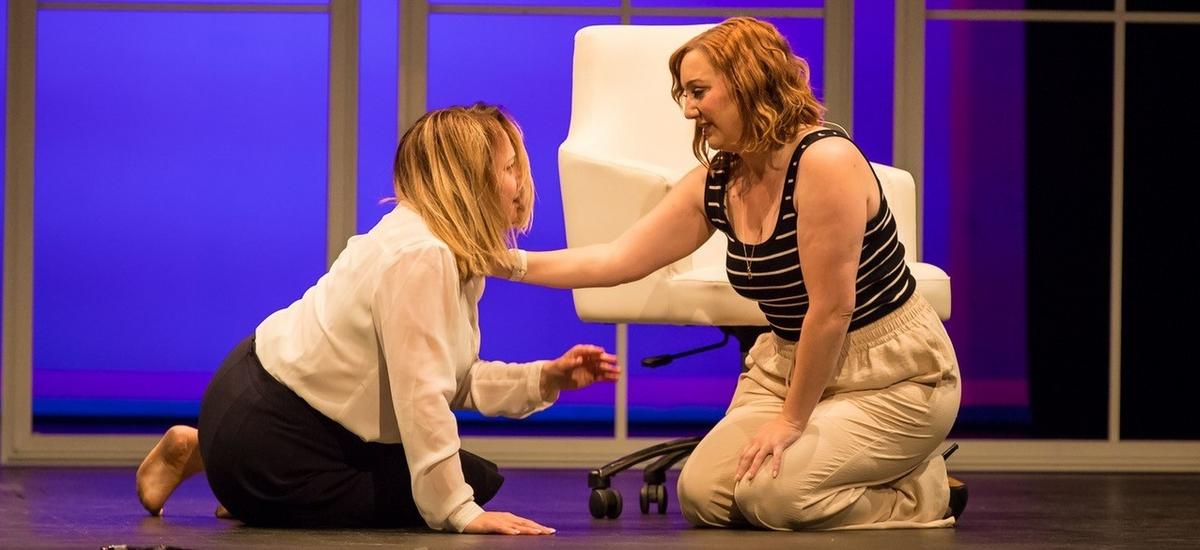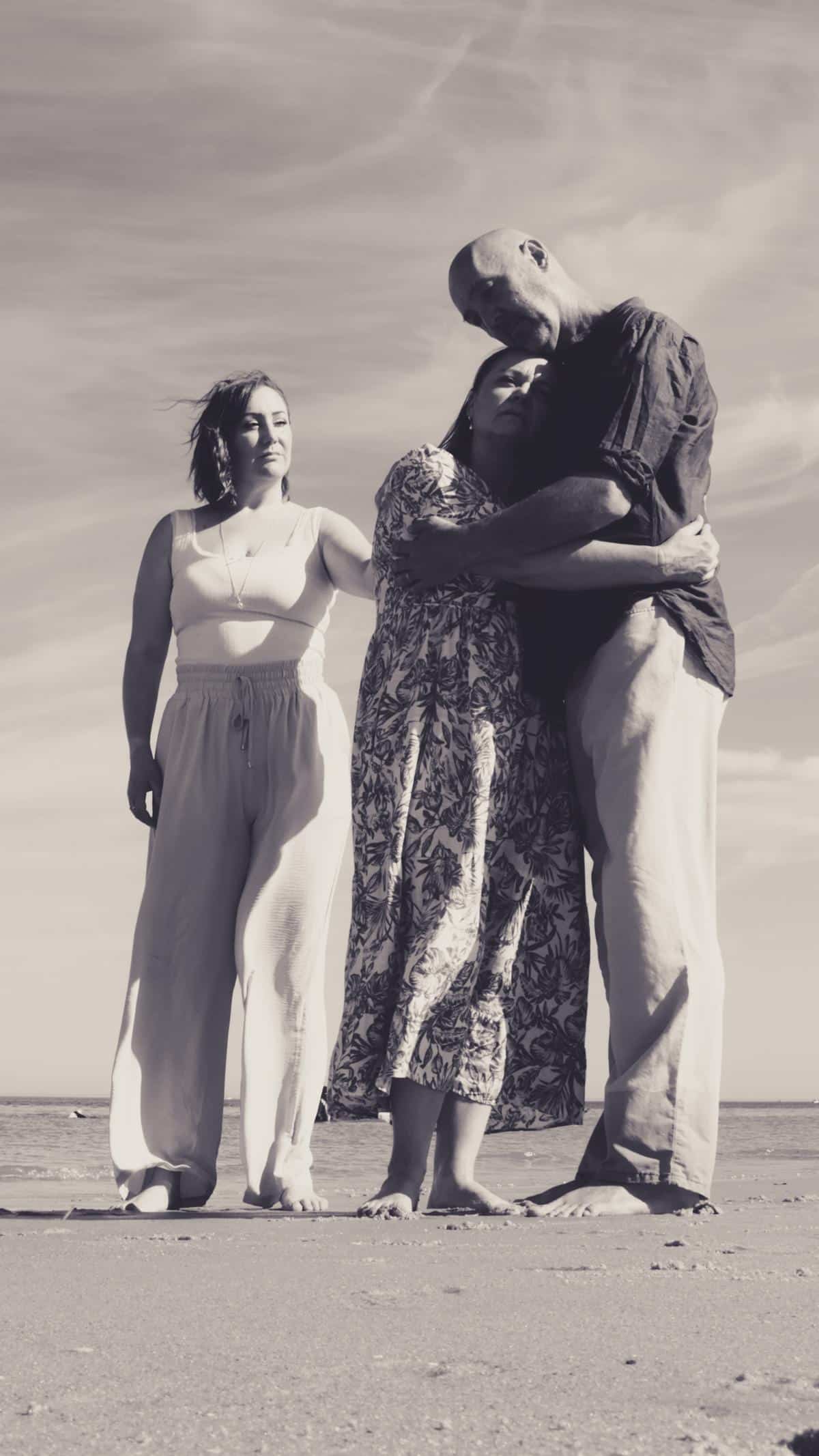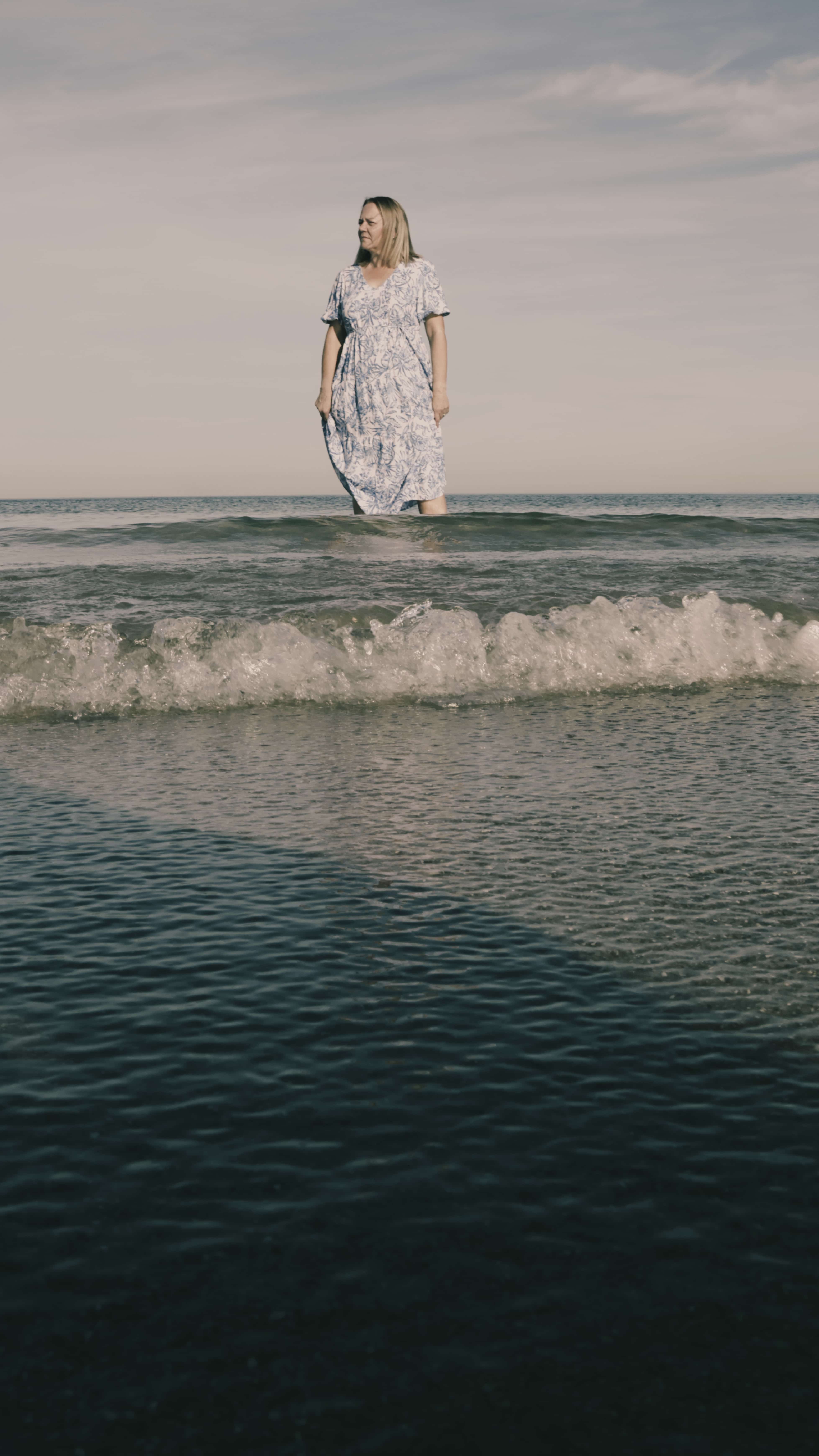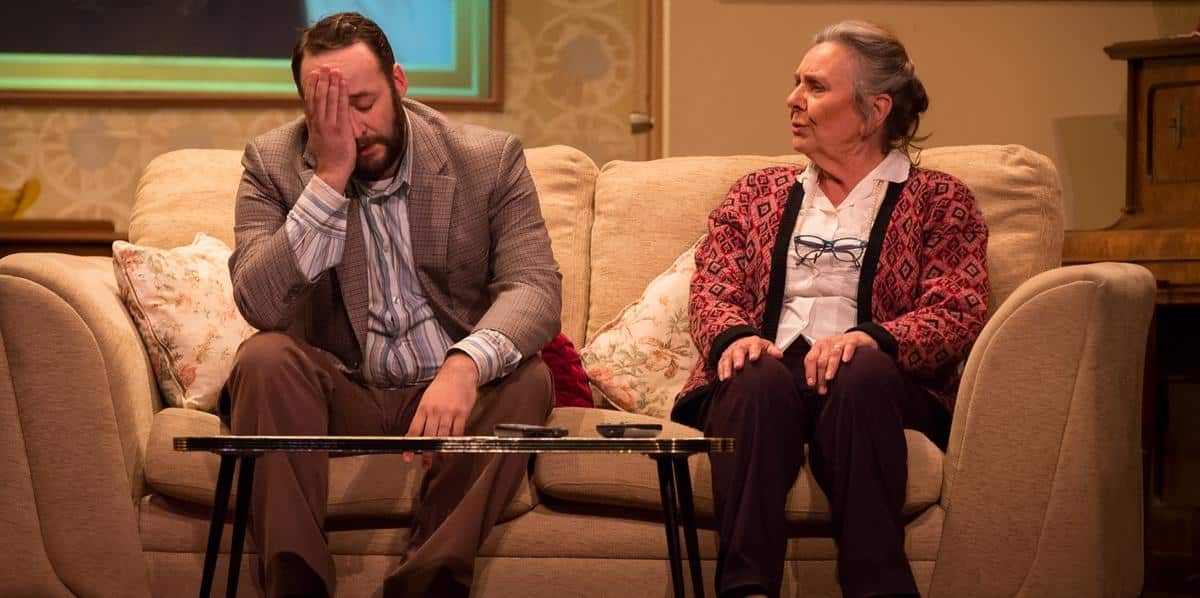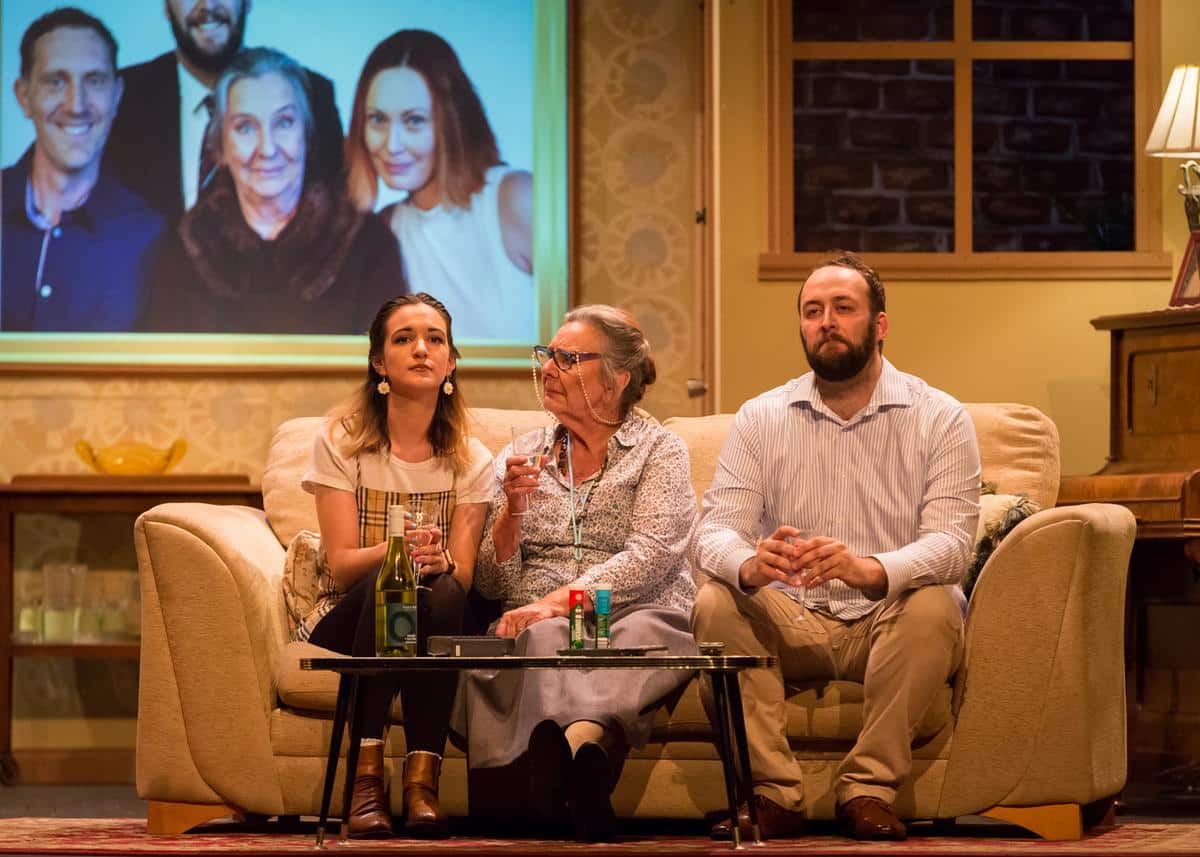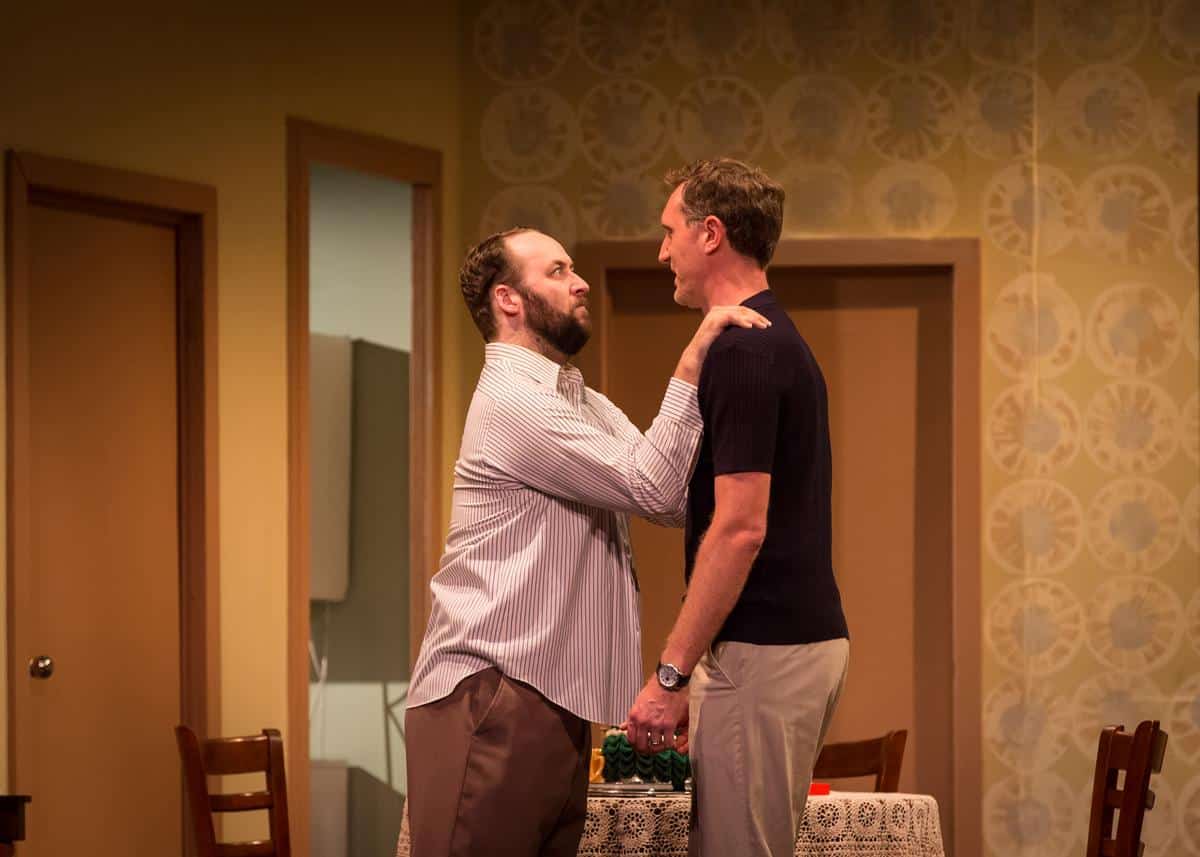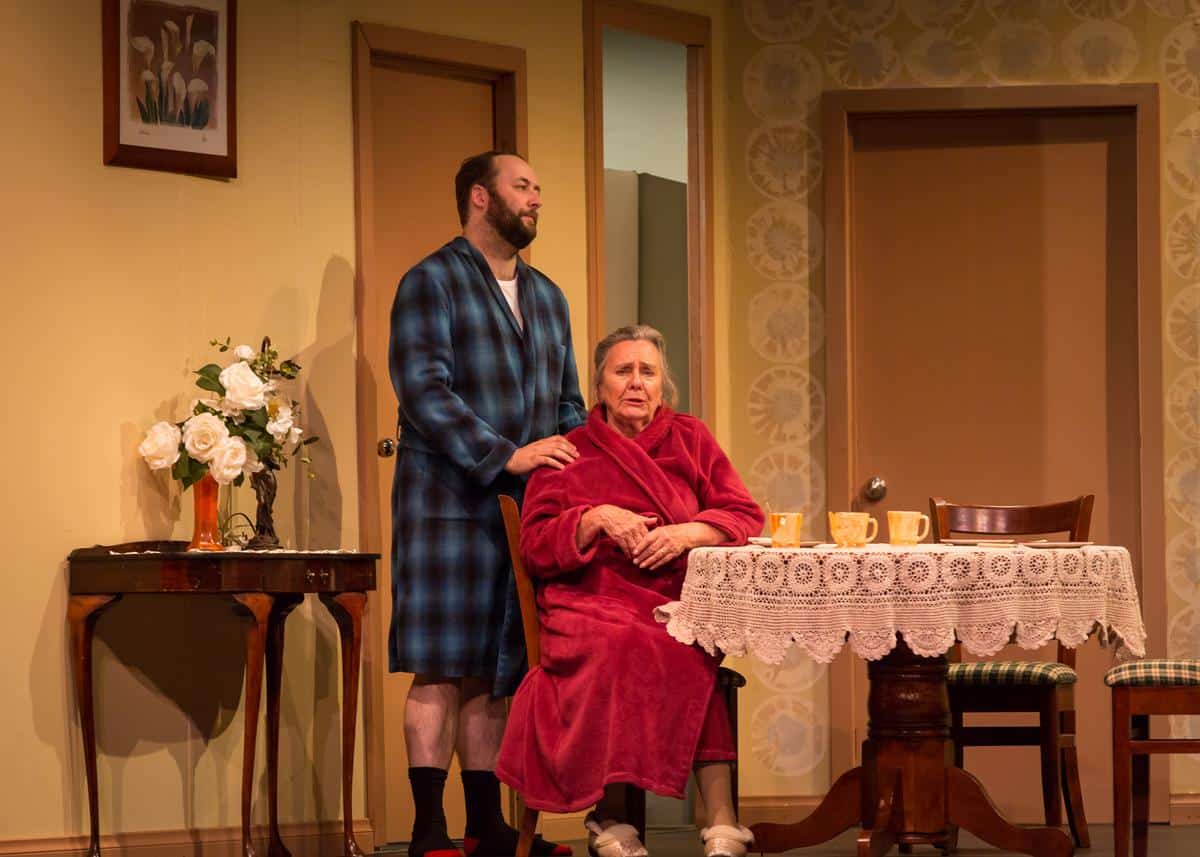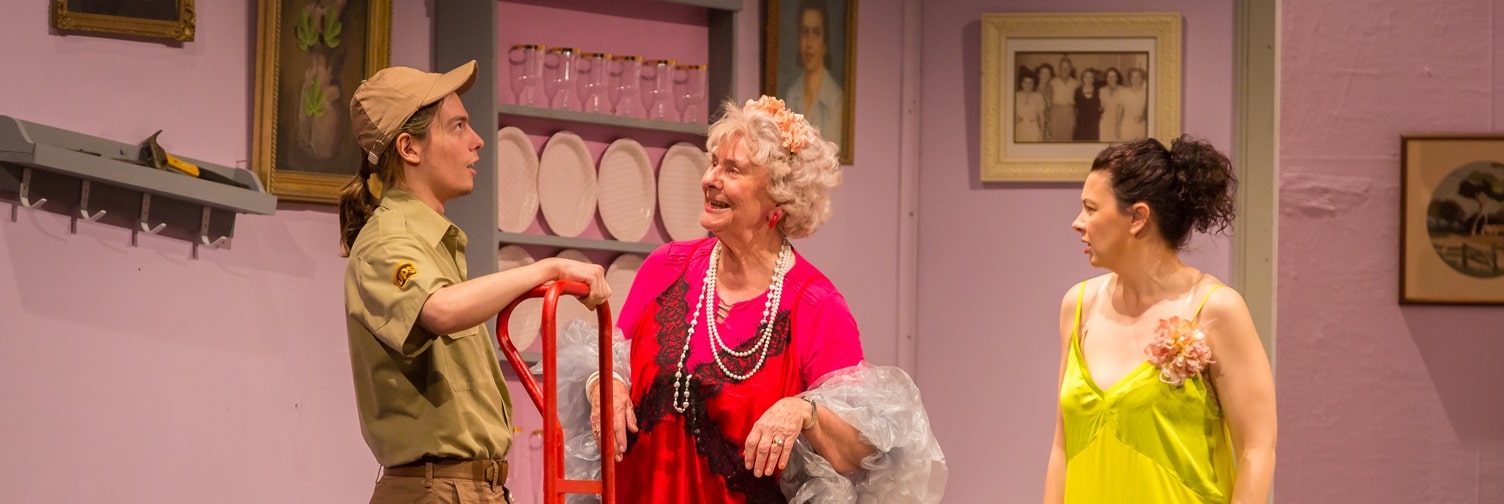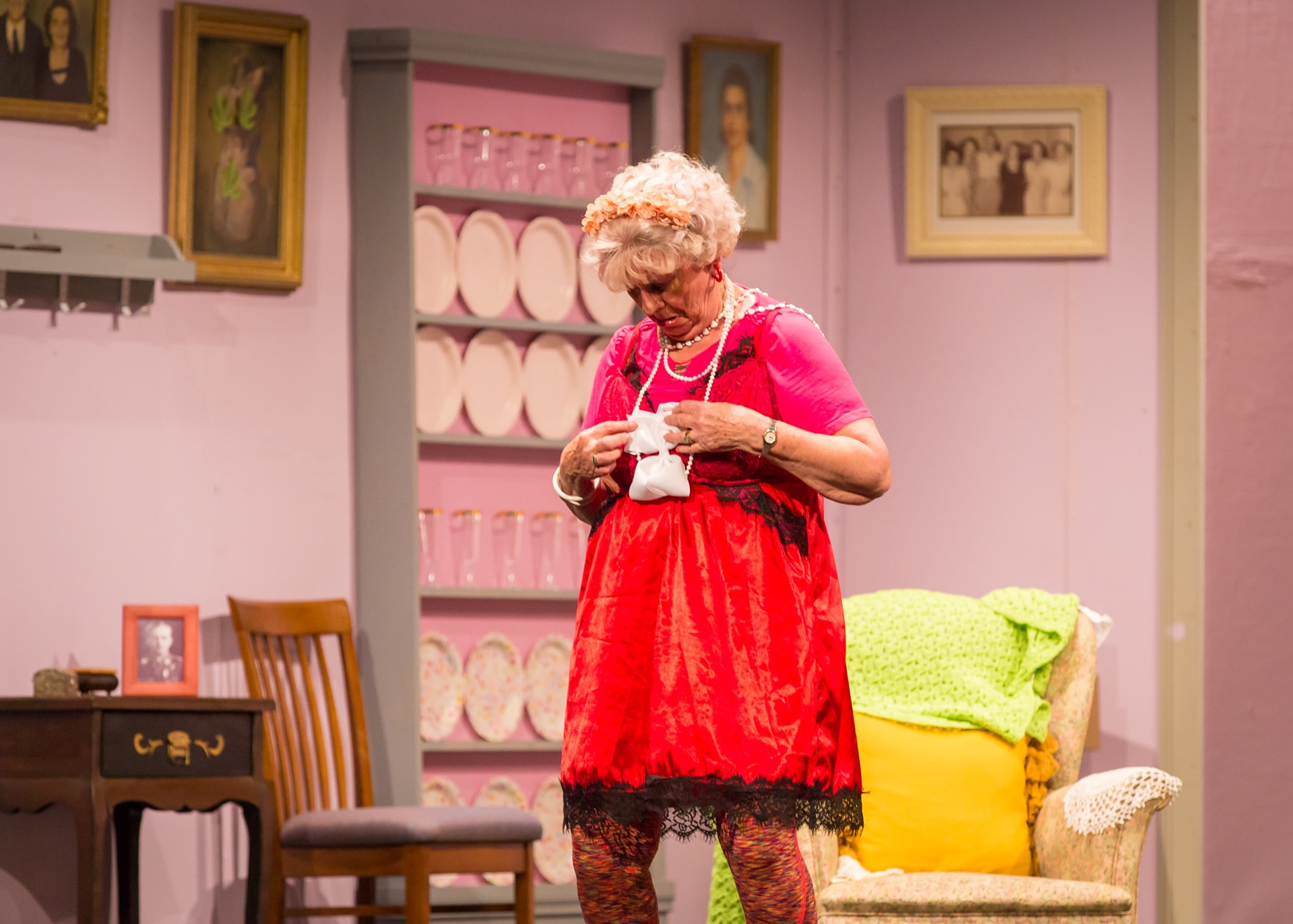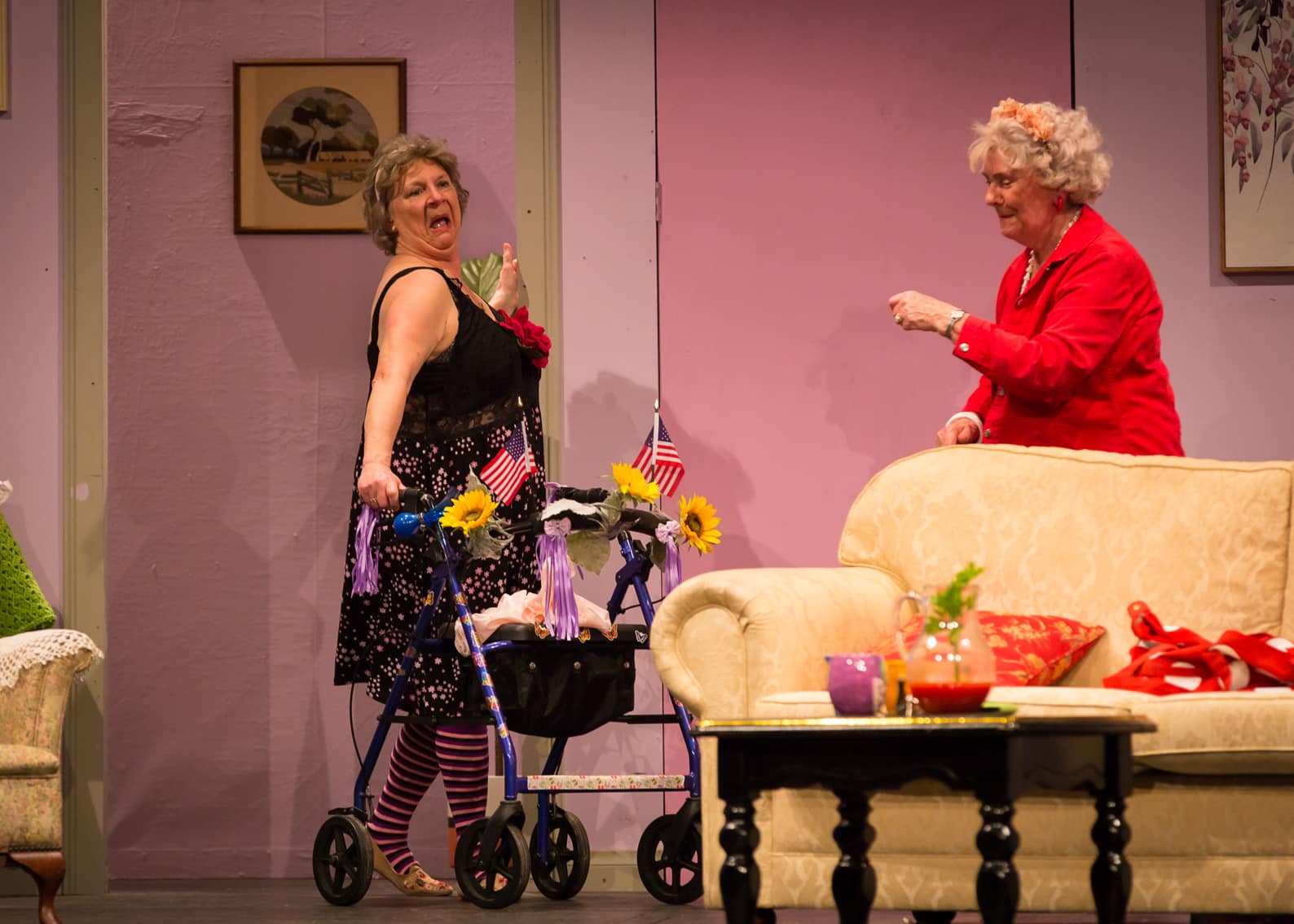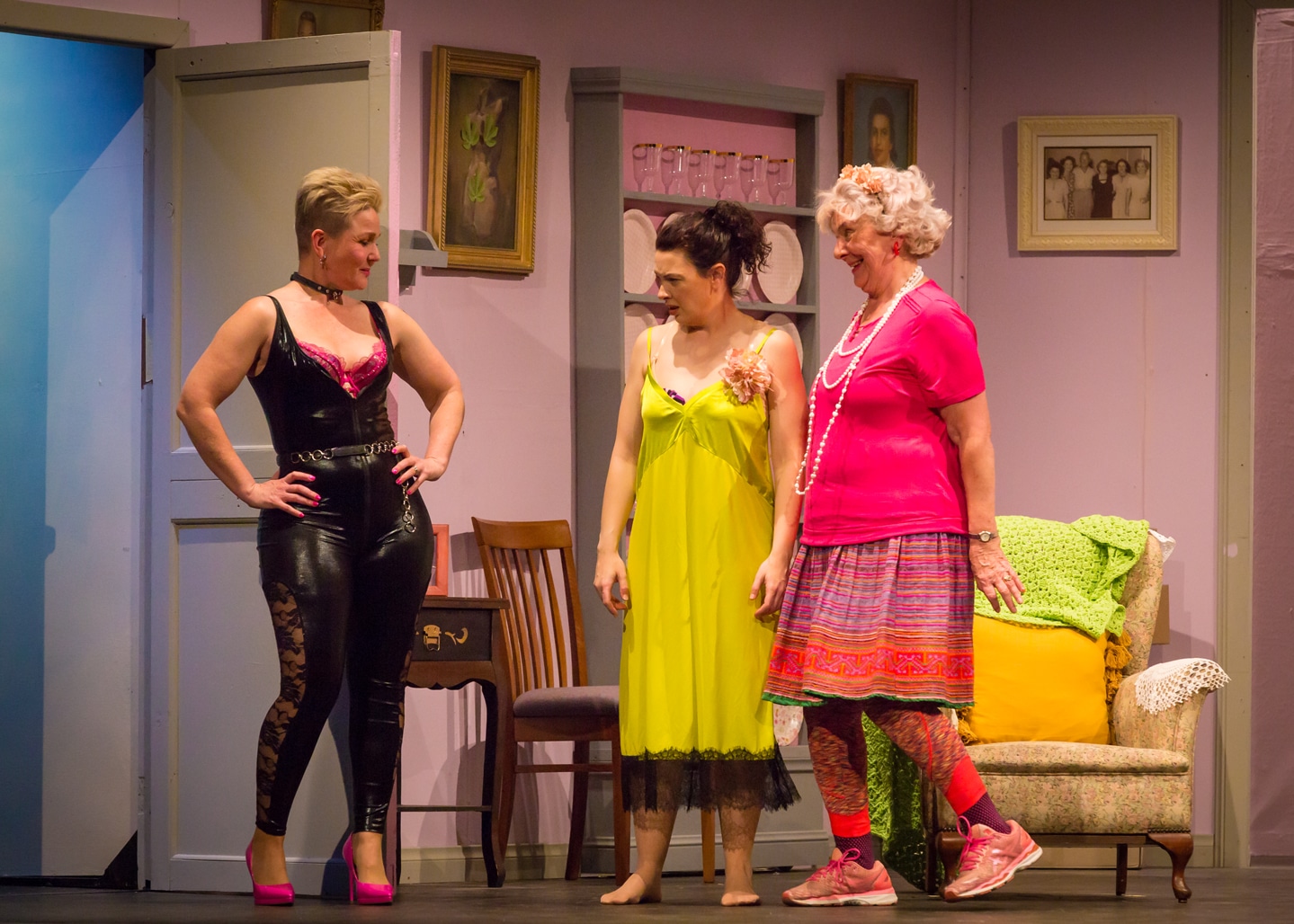Sponsored by Dementia Australia, the Adelaide Repertory Theatre’s production of ‘The Other Place’ by Sharr White portrays an emotional journey of the impact this disease can have on the surrounding people. As Dr Juliana Smithton struggles to accept her ‘medical episode’ and unexpected diagnosis, the people around her attempt to adapt and cope with her changing moods, sudden accusations, and large gaps in memory. Told entirely from Juliana’s perspective, the unreliable narration of the play leaves the audience wondering which moments were real and which were her deluded imaginings to make sense of her reality.
Robyn Brookes performance as Juliana is consistent, not leaving the stage from the very beginning of the one act play. Brookes shows great range as her character begins calmly and almost flatly, transitioning to cruel and cocky, before plummeting to desperate vulnerability, and finishing with quiet acceptance.
Jules’ devoted husband Ian, played by Scott Nell, displays a few beautiful moments of heartbreaking desperation as he tries to reason with his wife. However, there are times where an overuse of hand gestures and melodramatic tone hint to a lack of chemistry in this partnership. Brendan Cooney plays multiple minor characters as Man, reliably supporting his castmates with his solid stage presence and delightful diversity of characterisation. From the technician at Juliana’s presentation, to her disgraced post-Doc student, to her doctor, Cooney’s timing was great to watch.
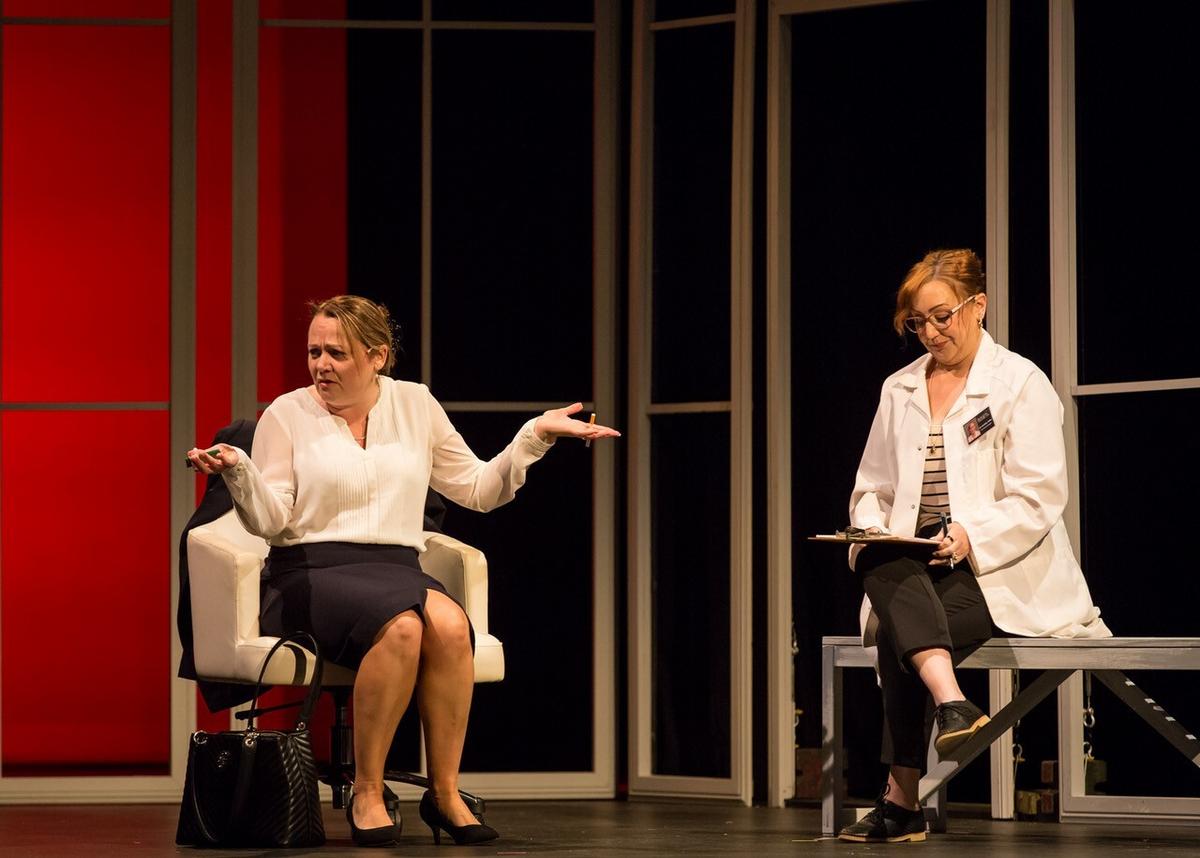
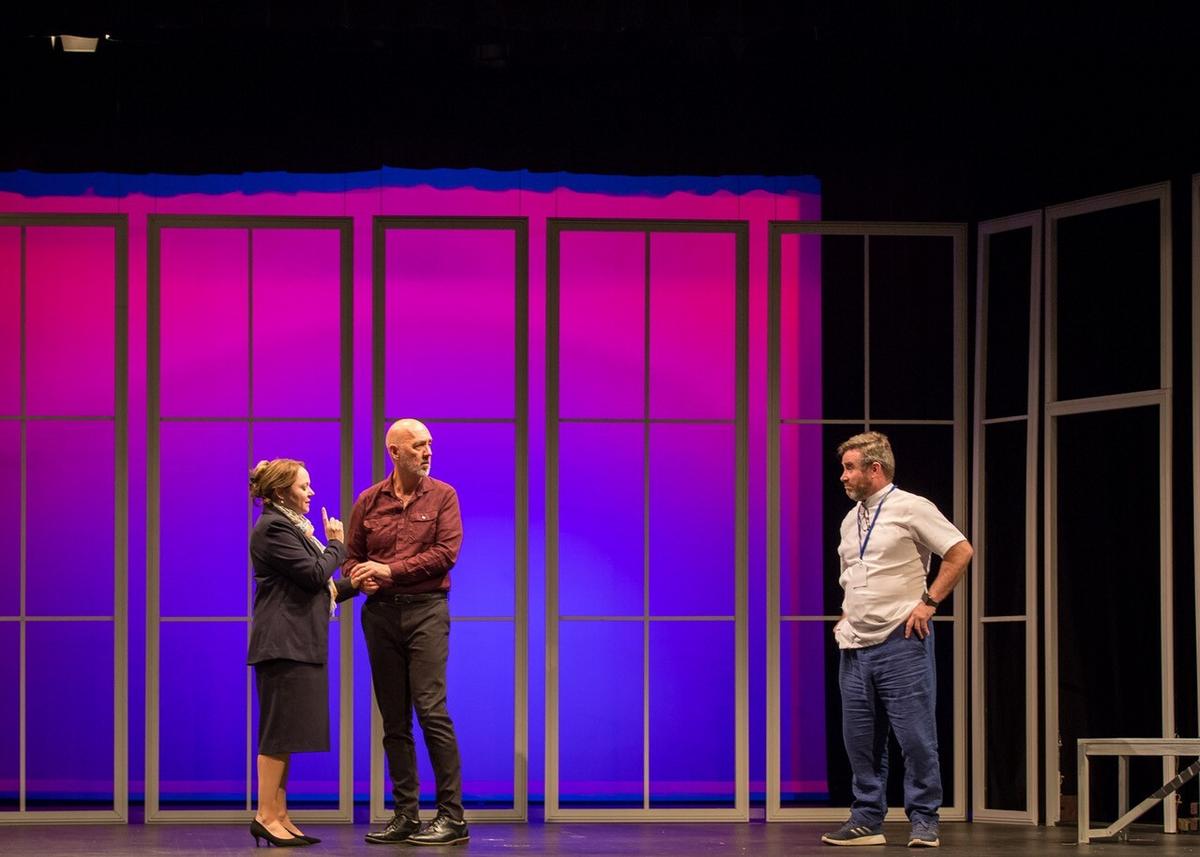

The standout performance must go to Tegan Gully-Crispe, who plays Woman, mastering a variety of characters including the Doctor, Juliana’s daughter Laurel, and the woman who now owns the other place. From her consistency and diversity in American accents, Gully-Crispe exuded a centeredness from within each of her characters that suspended disbelief, allowing the cool professionalism and warm empathy to come from the same person.
The stark minimalism of the set, reminiscent of National Theatre Live in the UK, gave way to quick changes in location within seconds, the main pieces being a rolling chair and a couple of stagnant benches on either side of the stage. White windows intersected to cut off the back of the stage to create a more enclosed space and to bring the actors closer downstage. While this was assisted with the occasional change in lighting for diversity in ambience, the back windows were underutilised in their capacity to deepen the space within some of the more isolating and projected scenes.
Basic lighting was used to imply a change in time and place, but could have also been used to more clearly differentiate the transitions between moments of reality, delusions, the past, and narration. Ominous sound cues were used initially to help those transitions, but they weren’t consistent throughout the play. Costumes were simple yet captured the essence of each character without being unnecessarily complicated. Head microphones were also used by each of the actors instead of projecting vocally.
David Sinclair’s gentle direction of this sensitive topic allows the character-driven story to highlight the fallibility of humanity and the need to support each other. While slow to start, it grows in both strength and vulnerability, encouraging the audience to reflect upon the direct and indirect impact of dementia. If you’re in the mood for some thoughtful theatre as we move into the cooler months, come along to see this beautifully bittersweet performance.
To book tickets to The Other Place, please visit https://adelaiderep.com/season-2025/the-other-place.
